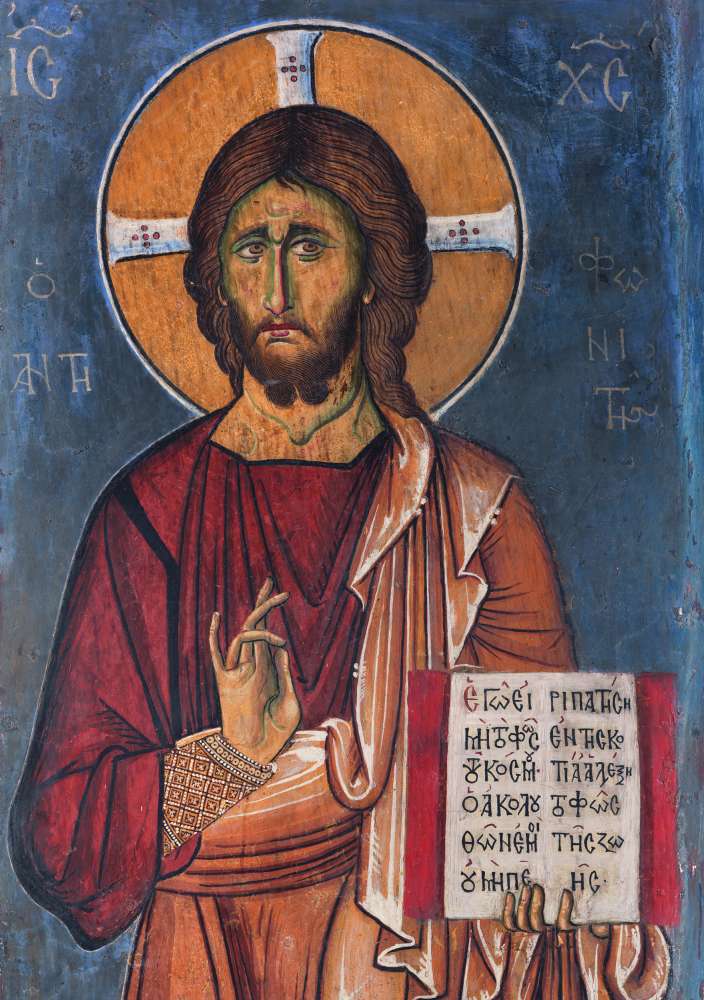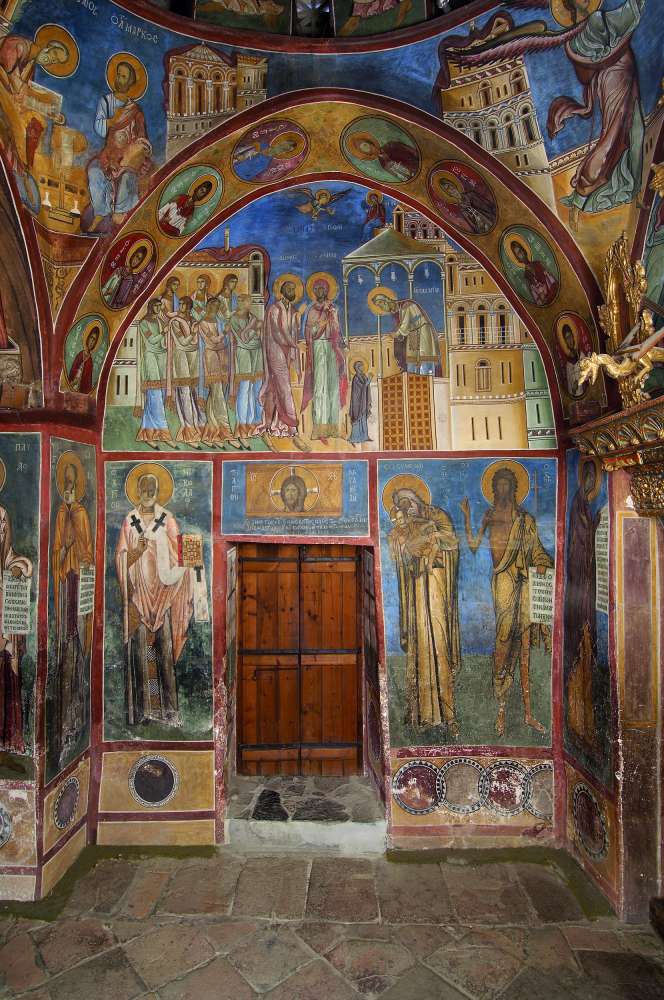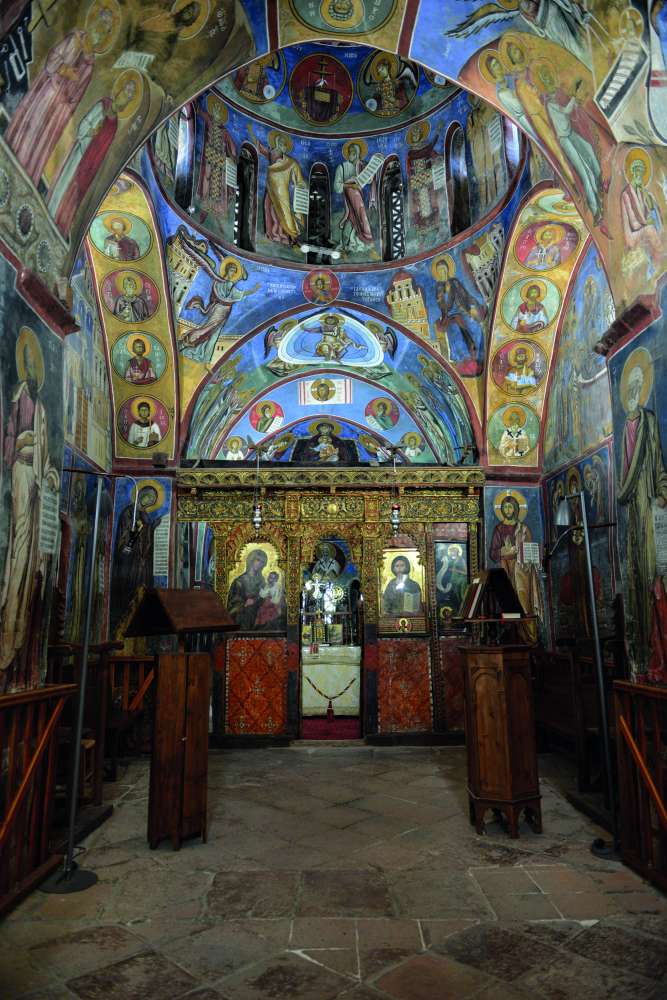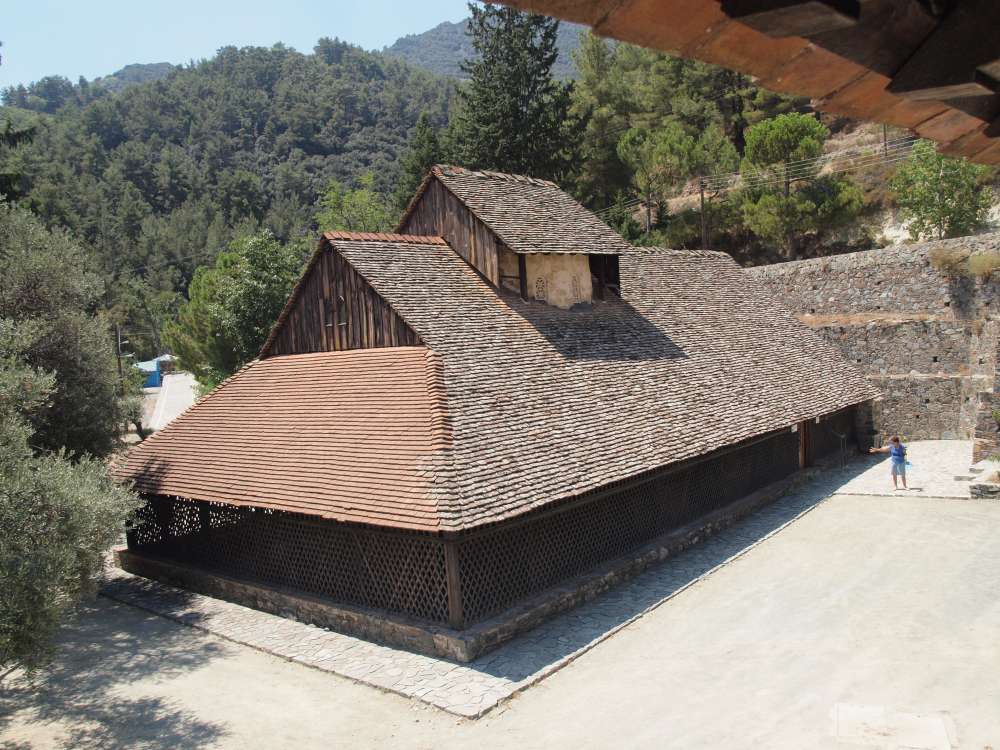The Church of Panagia tou Araka, which is located in a relatively isolated position in the Troodos mountains near the village of Lagoudera, is one of the most significant Byzantine monuments in Cyprus.
After an ascent from the dry plains around Nicosia, the Panagia tou Arakos is found in a rugged setting among rocks and pines. The exterior of the building presents a rustic appearance, which does not at all reveal the form of the interior. The steep sloping roof and the wooden portico surrounding the church could almost belong to a stave church in Norway rather than to a monument of Byzantine architecture. The visitor is in no way prepared for the experience of seeing the paintings on the interior. These frescoes are rightly famous, for they are among the most important surviving examples of mediaeval Byzantine painting. They are remarkable, in the first place, because they are so beautifully preserved. Due to the protection provided by the wooden roof, the decoration of the church, with the exception of its western wall, is for the most part complete, from the apex of the dome down to the dado at the floor. Once inside the church, the visitor feels completely surrounded by holy figures; in contemporary parlance, one could describe this as a “total immersion experience”. In the second place, with the exception of the frescoes in the narthex, all of the paintings essentially belong to the same time period, the late twelfth century. Two important icons from the iconostasis also belong to this time. And this was an especially interesting phase of Byzantine painting, for in this period the art of Byzantine churches was on the cusp of a change, engaged with new experiments in the portrayal of daily life, both physical and emotional. Then there is the artistic quality of the paintings, the fluid elegance of their drawing combining with the harmony of their colours. Finally, there is the sophistication of the iconography, which, to use an analogy once used by the art historian Hans Belting to describe another painting of this period, has all the intellectual complexity of a learned sermon. One of the striking features of the book is that the authors of several of the chapters find different theological concepts in the paintings, but there is little overlap between each of their expositions. The paintings can be read and interpreted in many different ways. There is no apparent limit to the range of spiritual meanings that they can provide.
The decoration of the interior of the Panagia tou Arakos recreates a kind of miniature kosmos, reaching from earth to heaven. It can be imaged in the words of a Byzantine poet and rhetorician of the tenth century, named John Geometres, who wrote a short poem describing the church of the Kyros monastery in Constantinople – it was probably the church now known as the Kalenderhane Djami in modern Istanbul. The church of the Kyros, like the Panagia tou Arakos, was dedicated to the Virgin. Addressing the Virgin directly, the poet wrote:
Virgin, Queen of all, your house is heaven….
But you, O Virgin, have set up a well-wrought ladder
Leading up from Earth to the orbit of heaven.
In the Panagia tou Arakos the frescoes create a hierarchy, leading from the mute stones of the earth, represented by the simulated marbles of the dado below, to Christ at the summit of the dome, holding the book of his Word as he gazes down upon mortals. There is a whole universe of ideas contained in the paintings of this small church. For the first time this beautiful book that has been devoted to the Panagia tou Arakos allows us to appreciate all aspects of this remarkable building in their entirety. We are grateful indeed to the authors and the sponsors of the volume for their generous gift.
Henry Maguire
Emeritus Professor of Byzantine Art, Johns Hopkins University









